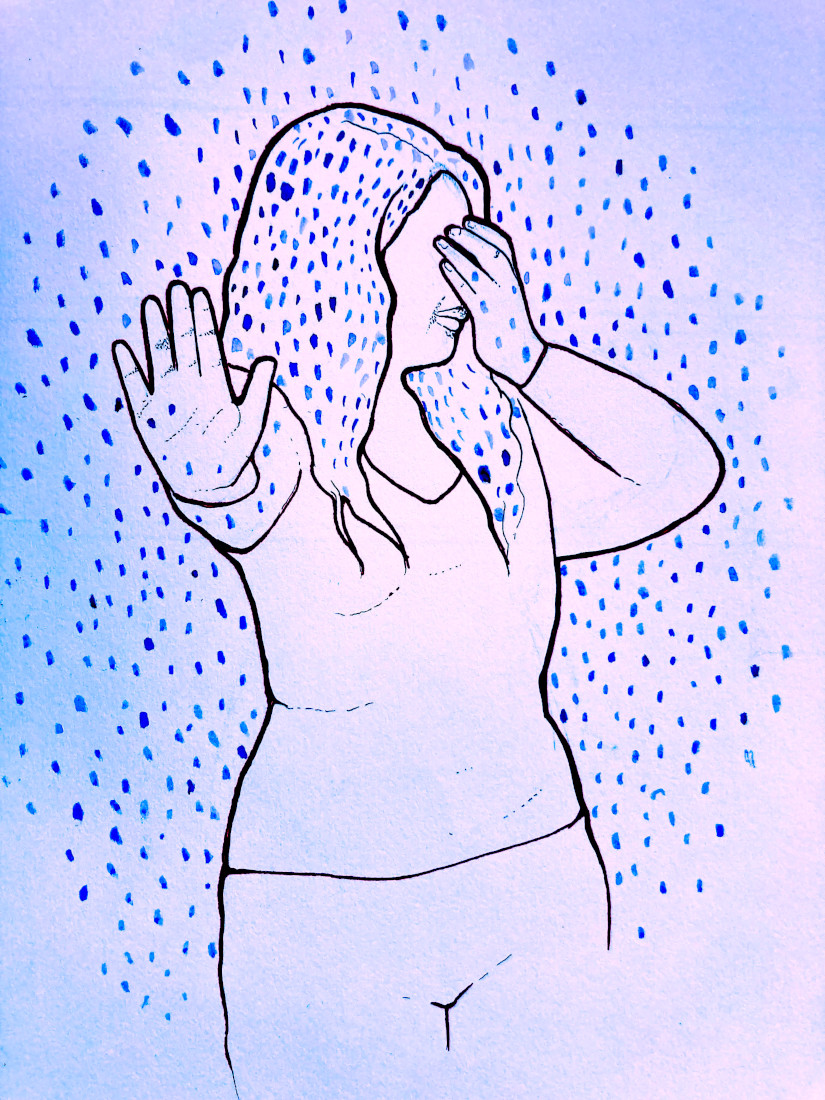Thinly veiled criticism
’90s beauty standards aren’t back. They never left.
It felt like progress, when, two decades into my eating-disorder recovery, I stepped on a hospital scale and didn’t register the number. It felt like progress, when, during that same time period, designers expanded their size ranges, plussize models strutted down runways and patient advocates bolstered the Health at Every Size movement.
That’s why it “felt like a collective cultural slap across the face” when the New York Post published a headline that read “Bye-bye booty: Heroin chic is back.”
As Ella Sangster writes for Harper’s Bazaar, “It was a headline that would’ve fit aptly on a 1999 newsstand, or even the early ’00s, but surely not in 2022.”
For those unfamiliar with the markedly offensive term, “heroin chic” was, as Guardian columnist Eva Wiseman explains, “the fashionable body shape of the 1990s, its outline drawn faintly in charcoal, the curves small caves, the angles sharp, the CK1 smell of liquid melancholy.”
Sangster describes this ubiquitous look as “an epidemic of sorts” that plagued the ’90s and early 2000s. And now, it’s back, infecting seemingly everything from TikTok trends to New York Fashion Week collections. It’s also something many immersed in the cyclical fashion world saw coming.
“It’s been six months since Kim Kardashian informed the world that she lost 16 pounds in three weeks in order to fit into Marilyn Monroe’s dress for the Met Gala,” Marielle Elizabeth recently penned for Vogue. “For me, it marked a shift in tone, a proverbial Kardashian in the coal mine, ushering in the end of an era that at least claimed to celebrate curvy bodies.”
While body-positivity movements gained mainstream popularity in recent years, the 1990s’ thin ideals never truly left. Generations were raised on diet culture, force-fed tabloid critiques of celebrity bodies and ads for Weight Watchers and Jenny Craig that interrupted episodes of The Biggest Loser.
This era commodified thinness, reducing real people to the sum of their (ideally) barely existent parts. The 2000s silhouette was, journalist Meaghan Wray describes, “less about fashion and more about celebrating thin bodies. In fact, the body was the fashion.”
Those bodies – and today’s – are hurting. A review of studies published between 2000 and 2018 found that eating-disorder rates increased from 3.5 per cent for the period between 2000 and 2006 to 7.8 per cent for the period between 2013 and 2018. The number of young women hospitalized for eating disorders in Canada increased by nearly 60 per cent during the first year of the COVID-19 pandemic.
Reducing body shapes, sizes and types to trends has always been dangerous, Yomi Adegoke writes for Vogue.
“Standards by their very definition are exclusionary. One body type has to go out of fashion for another to come in; the huge boobs of the ’90s are replaced with the huge bums of the last decade, as if women’s bodies are able to contort and change of their own accord based on societal whims.”
But “when women’s bodies are perceived as trends and given the same treatment as clothes, there are no winners, except dieticians and plastic surgeons.”
While slip dresses, baby tees and low-rise jeans are once again in vogue, the ’90s aren’t back. The decade’s thin ideals have lurked behind every mass-marketed waist trainer, detox tea and Whole30 challenge since.
This isn’t progress. It’s persistence. And it’s terrifying.
A former sports broadcaster, Danielle Doiron is now a writer, editor and educator. Find them in Winnipeg, Philadelphia, Fargo and, occasionally, on the airwaves.
Published in Volume 77, Number 11 of The Uniter (November 24, 2022)








